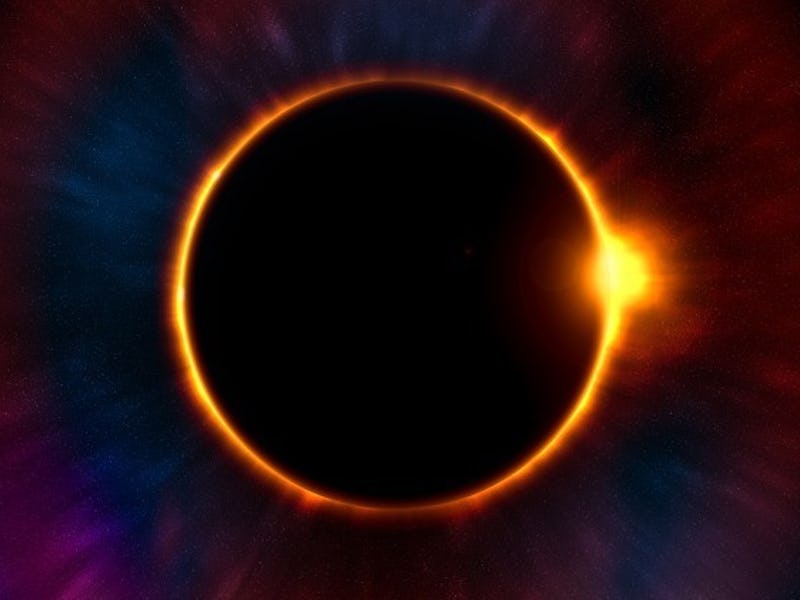"Ring of Fire" Solar Eclipse Hits Its Peak in Africa
One of the most spectacular celestial sights reaches its high point.

At around 9 a.m. GMT Thursday morning, a ring of fire reached it’s zenith rose over Africa.
The solar eclipse — an almost full, but not quite — obstruction of the sun concluded around noon, after about six hours of coverage. The phenomenon occurs when the moon passes directly between the Earth and the sun in its orbit, momentarily causing a block of sunlight. In this eclipse, lucky viewers in very specific parts will see a total eclipse, where the moon’s position entirely covers the sun and causes a beautiful “ring of fire” effect.
Readers are advised to avoid looking directly at any type of eclipse. Special eye protection is available that enables viewers to look directly at the display.
The famous ring of fire effect is, unfortunately, only visible from around south-central Africa during this eclipse, in a very thin strip. The rest of Africa was still able to experience the eclipse, but it wasn’t the “ring of fire” eclipse as seen in pictures.
Excited eclipse viewers flocked to social media to share their images from their location.
“We’re in for one heck of a ride as we follow the moon’s shadow as it races across the surface of the Earth at over 2,000 mph,” Slooh astronomer Paul Cox said in a statement ahead of the eclipse.
Thursday’s eclipse was a special kind known as an annular eclipse, which creates the ring of fire effect. In a total eclipse, the moon completely blocks out the sunlight.
This is the year’s second solar eclipse. The last one, which covered Indonesia and the Pacific Islands, took place in March and passed over a path 8,000 miles long. The next one is expected to reach Africa again, as well as parts of Argentina, in February 2017. Readers in North America will have to wait a while — a solar eclipse is scheduled for August 2017 across the continental United States.
“Slooh was able to broadcast the entire eclipse from several locations, thanks to our global network of feed partners stretching from our flagship observatory at the Institute of Astrophysics of the Canary Islands, and extending from South Africa to Tanzania, Madagascar, and Reunion Island,” said Dr. Rick Fienberg, press officer at the American Astronomical Society.